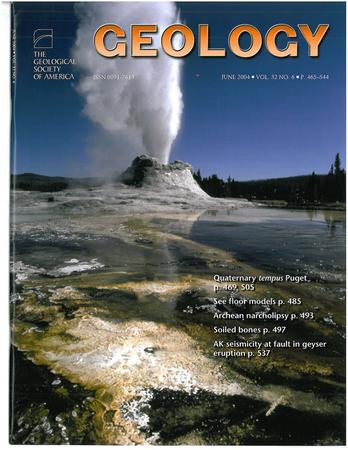How double-slab subduction shaped the Eastern Anatolian Plateau: Insights from geodynamic models
IF 4.6
1区 地球科学
Q1 GEOLOGY
引用次数: 0
Abstract
The Eastern Anatolian Plateau presents a geologic puzzle: surface elevations of ∼2 km occur in an area with average crustal thickness (35−45 km) and thin mantle lithosphere (60−70 km). Despite various hypotheses proposing processes including slab break-off, delamination, and crustal shortening, the mechanisms behind the plateau’s formation remain debated. Geological reconstructions show Neotethyan subduction along two branches, but the role of one versus two slabs in the evolution of the plateau remains uncertain. This study addresses a key geodynamic question: Is the observed plateau evolution consistent with both single- and double-slab scenarios? We conduct high-resolution 2-D numerical experiments that test both scenarios. Our results reveal that a single-slab subduction model can produce a plateau with an average uplift similar to the observed data in terms of magnitude, but it fails to replicate the broadness of the plateau as observed today, stretching over a distance of 350 km. In contrast, in a double-slab subduction system, the northern branch of the Neo-Tethys first delaminates and breaks off before break-off of the southern branch, resulting in a topographic evolution that is better aligned with observations, including a southward-younging surface uplift of 2 km. This scenario also aligns more closely with geophysical and geological observations, including crustal deformation and subsurface structures seen in seismic tomography. Our findings suggest that the double-slab model provides a more coherent explanation for the development of the Eastern Anatolian Plateau. While this model is particularly applicable to the Tethyan orogenic system, it may offer insights into other regions with complex subduction dynamics such as India-Eurasia collision.双板块俯冲如何塑造了东安纳托利亚高原:来自地球动力学模型的见解
东安纳托利亚高原提出了一个地质难题:地表海拔~ 2公里的地区平均地壳厚度(35 ~ 45公里)和薄的地幔岩石圈(60 ~ 70公里)。尽管提出了各种各样的假说,包括板块断裂、分层和地壳缩短,但高原形成背后的机制仍存在争议。地质重建显示新特提斯板块沿两条分支俯冲,但一块板块与两块板块在高原演化中的作用仍不确定。这项研究解决了一个关键的地球动力学问题:观察到的高原演变是否与单板和双板情景一致?我们进行了高分辨率的二维数值实验来测试这两种情况。我们的研究结果表明,单板块俯冲模型可以产生一个平均隆起幅度与观测数据相似的高原,但它无法复制今天观测到的高原的宽度,延伸超过350公里。相比之下,在双板块俯冲体系中,新特提斯的北部分支在南部分支的断裂之前首先剥离和断裂,导致地形演化与观测结果更吻合,包括向南的年轻地表隆起2公里。这种情况也更符合地球物理和地质观测,包括地壳变形和地震层析成像中看到的地下结构。我们的研究结果表明,双板模型为东安纳托利亚高原的发展提供了更连贯的解释。虽然该模型特别适用于特提斯造山系,但它可能为其他具有复杂俯冲动力学的地区(如印度-欧亚碰撞)提供见解。
本文章由计算机程序翻译,如有差异,请以英文原文为准。
求助全文
约1分钟内获得全文
求助全文
来源期刊

Geology
地学-地质学
CiteScore
10.00
自引率
3.40%
发文量
228
审稿时长
6.2 months
期刊介绍:
Published since 1973, Geology features rapid publication of about 23 refereed short (four-page) papers each month. Articles cover all earth-science disciplines and include new investigations and provocative topics. Professional geologists and university-level students in the earth sciences use this widely read journal to keep up with scientific research trends. The online forum section facilitates author-reader dialog. Includes color and occasional large-format illustrations on oversized loose inserts.
 求助内容:
求助内容: 应助结果提醒方式:
应助结果提醒方式:


